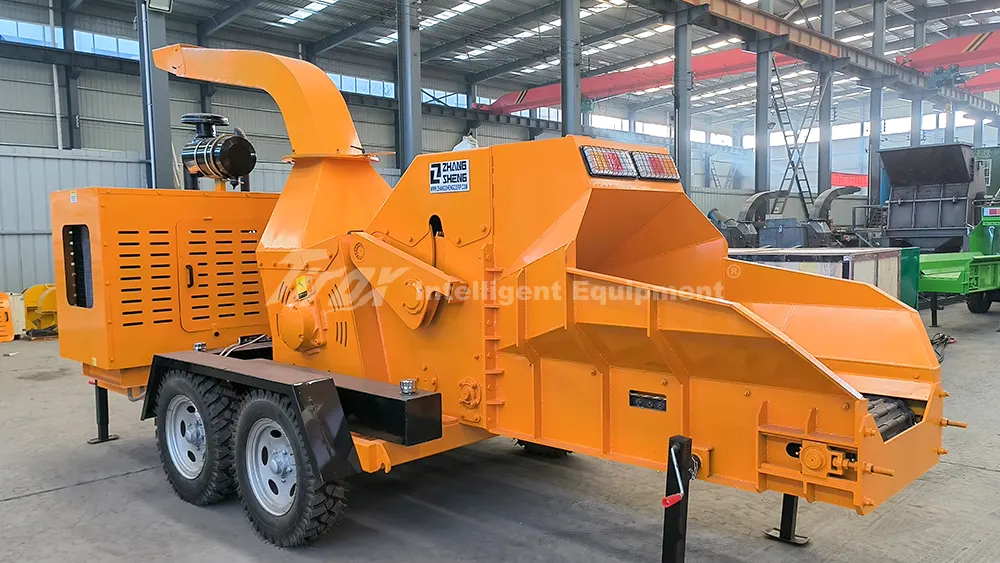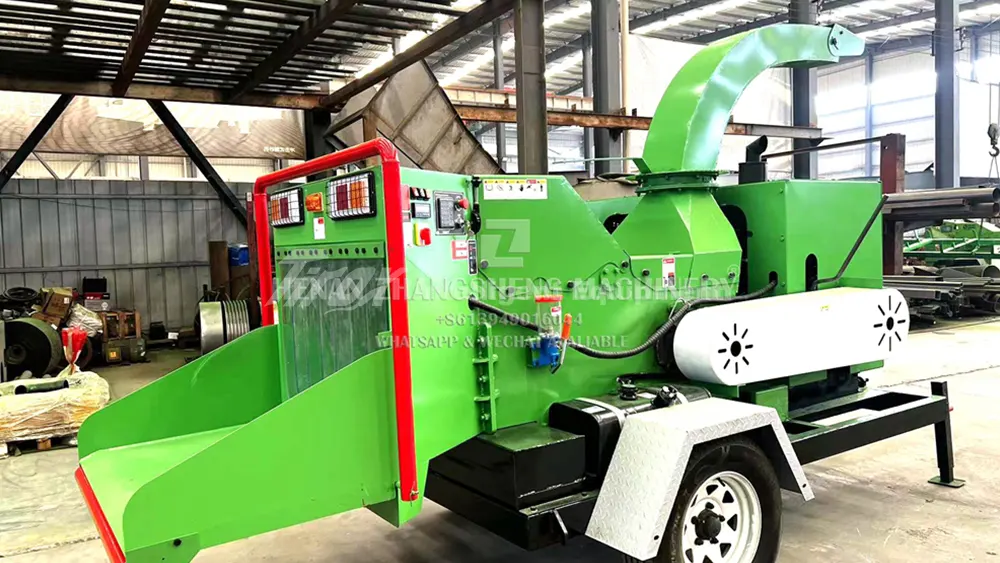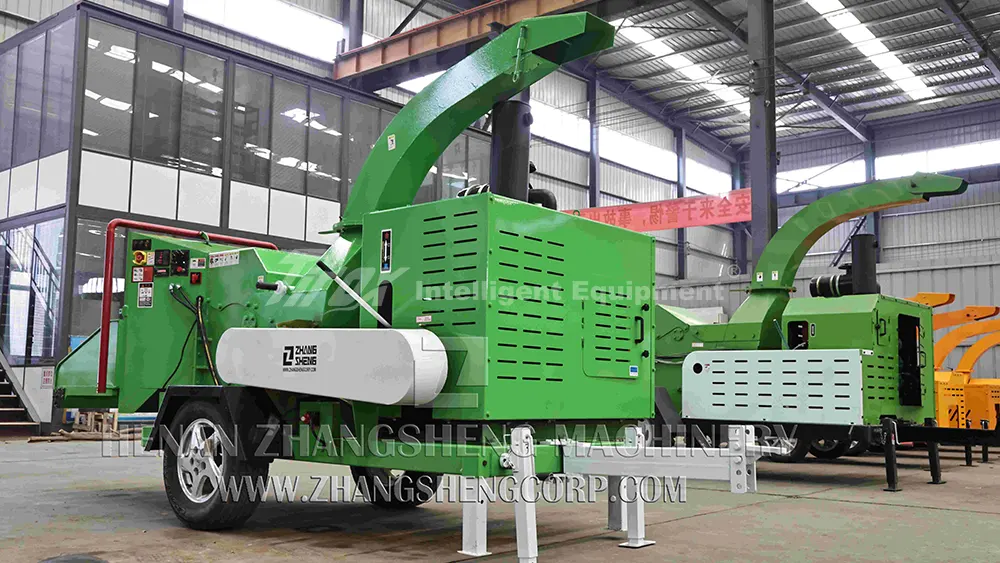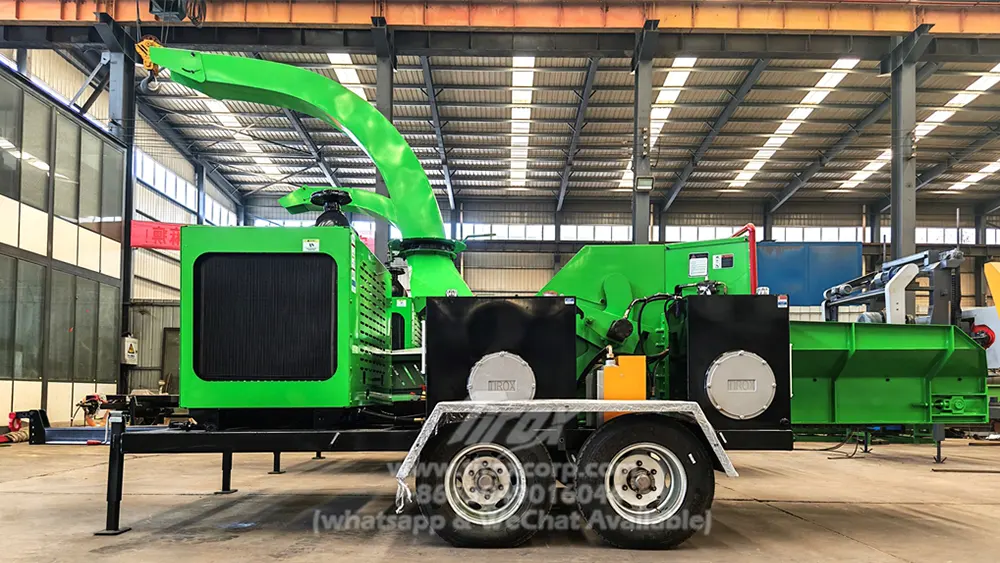Efficient wood processing is critical for industries like forestry, biomass energy, and pulp & paper. But how do you choose the right industrial chipper for your needs?
Disc chippers are designed to produce uniform chips using a large rotating disc equipped with sharp knives, while whole log chippers process entire logs or trees with minimal pre-processing.
Choosing between these machines requires understanding their mechanisms, applications, and advantages. Let’s dive deeper into how each chipper can optimize your operations.
What is an Industrial Disc Chipper and Why Is It Important?
Disc chippers are precision machines designed to produce uniform wood chips for industries that demand high-quality output, like pulp & paper or biomass energy.
These machines feature a large steel disc with knives that cut wood perpendicular to its grain, resulting in consistent chip sizes ideal for specialized applications.
Industrial disc chippers are compact, energy-efficient, and highly effective for specific feedstocks. Their precision makes them indispensable for industries requiring standardized wood chips. Below is a breakdown of their key features:

Mechanism and Operation
Disc chippers operate by using a rotating steel disc equipped with sharp knives. Wood is fed into the machine, and the knives cut perpendicular to the grain, creating chips of uniform size. This mechanism ensures the chips meet stringent specifications for industries like particleboard manufacturing or pulp production.
Advantages of Disc Chippers
- Precision in chip sizing
- High throughput for specific feedstocks
- Compact design suitable for limited space
These features make disc chippers a preferred choice for industries requiring consistent chip dimensions.
Applications
Disc chippers are ideal for pulp & paper production, particleboard manufacturing, and biomass fuel processing. Their ability to produce highly uniform chips ensures compatibility with stringent industrial requirements.
Learn more about our disc chippers here.
What Are Industrial Whole Log Chippers and How Do They Work?
Whole log chippers are robust machines designed for high-volume processing of entire trees or logs, with minimal pre-processing required.
These machines use powerful feed systems to handle large, unprocessed timber, converting it into consistent wood chips efficiently.
Whole log chippers streamline operations for businesses dealing with large-scale timber or land-clearing projects. Below are their key characteristics:

Design and Functionality
Whole log chippers are equipped with heavy-duty feed systems, often crane-fed, to process entire logs or trees. They feature advanced mechanisms to break down large timber into uniform chips, reducing labor and increasing efficiency.
Benefits for Large-Scale Operations
- High-volume processing capabilities
- Reduced manual labor for material handling
- Efficient conversion of raw timber into consistent chips
Use Cases
Common applications include land clearing, biomass fuel production, and residue management in sawmills. These machines are designed to handle the demands of large-scale operations seamlessly.
Discover more about whole log chippers here.
Disc vs. Whole Log Chippers: Which One Should You Choose?
Choosing the right chipper depends on your raw material inputs, desired output specifications, and operational scale.
Disc chippers are ideal for precision and uniformity, while whole log chippers excel in high-volume, large-scale processing.
Material Input Analysis
Disc chippers are best suited for smaller, specific feedstocks requiring uniform chips. Whole log chippers handle larger, unprocessed logs or trees, making them better for high-volume operations.
Desired Output Specifications
Disc chippers produce consistent chip dimensions for industries like pulp & paper, whereas whole log chippers focus on high-efficiency bulk processing for biomass fuel and other applications.
Cost-Benefit Analysis
Disc chippers have lower operating costs due to their energy-efficient design. Whole log chippers require higher initial investment and operational expenses but offer unparalleled throughput for large-scale needs.
Compare industrial chipper types here.
Maximizing the Performance of Your Chipper
Maintaining your chipper ensures maximum uptime and operational efficiency, which is vital for profitability.
Regular knife maintenance, lubrication, and inspections are key to extending the lifespan and performance of industrial chippers.
Scheduled Maintenance Programs
| Daily Checks | Fluid levels, knife inspection, belt tension |
|---|---|
| Weekly/Monthly Inspections | Bearing lubrication, screen condition, hydraulic system health |
| Annual Overhauls | Comprehensive inspection, preventive replacement of wear parts |
Knife & Screen Management
- Choose knives made from high-quality steel
- Perform routine sharpening and replacement
- Ensure screens match desired chip size specifications
Read more on maintenance strategies.
Conclusion
Selecting and maintaining the right chipper ensures operational efficiency, profitability, and adaptability to industry needs.






